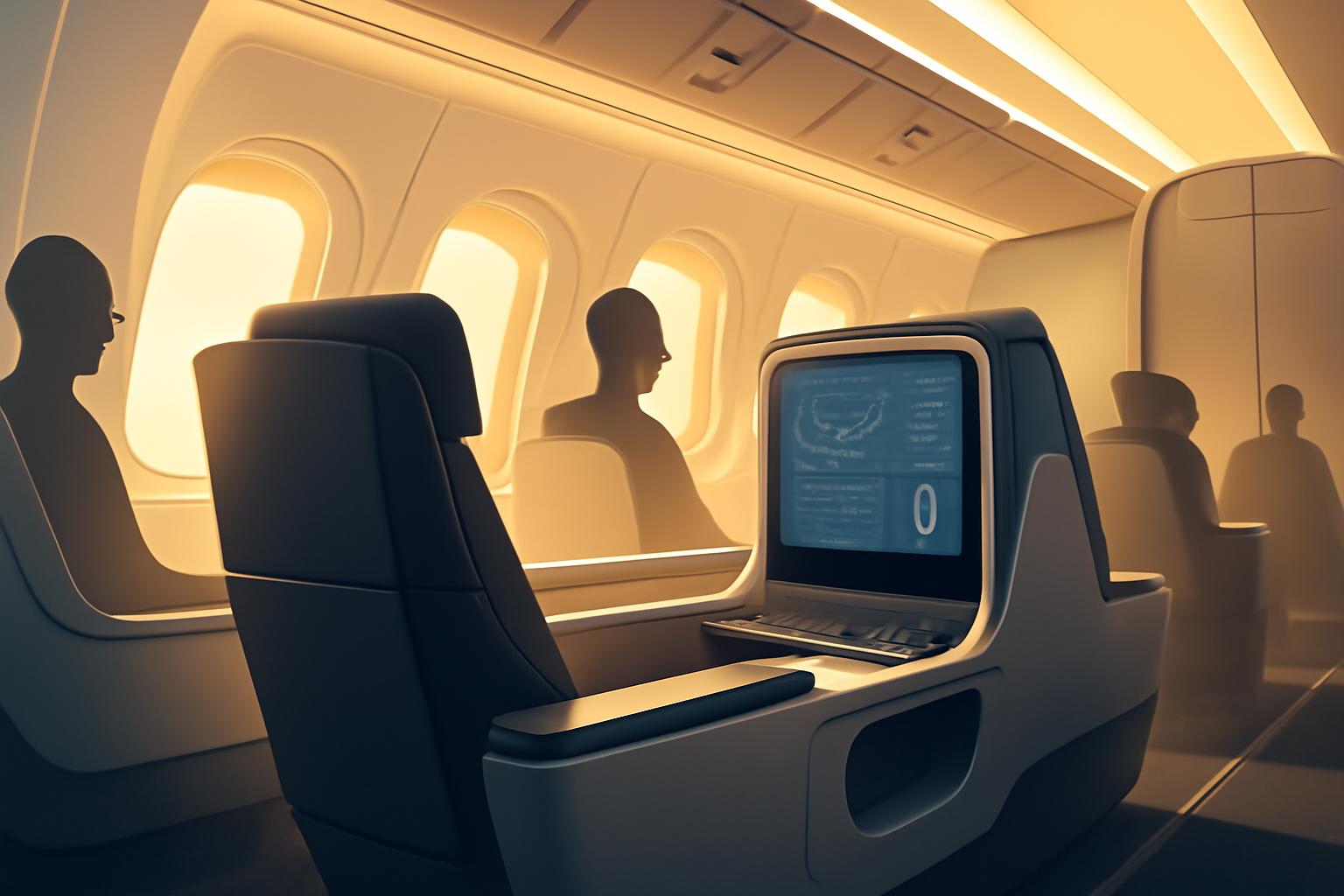American Airlines Faces Uphill Battle in Luxury Travel Boom
American Airlines has recently introduced premium touches such as Champagne Bollinger in its top-tier cabins and lounges, signaling an effort to catch up in the booming luxury travel market. Yet, behind the scenes at its Fort Worth headquarters, the carrier confronts significant hurdles in regaining its competitive edge against rivals Delta Air Lines and United Airlines. In the first nine months of 2025, Delta and United posted profits of $3.8 billion and $2.3 billion, respectively. American Airlines, despite operating the highest number of flights, generated a mere $12 million, representing only 2% of the combined profits of the three largest U.S. carriers.
American ranked last in J.D. Power’s 2025 North American airline customer satisfaction survey and placed ninth out of ten airlines for on-time arrivals in the first half of the year, according to the U.S. Department of Transportation. These performance issues compound the airline’s challenges in reversing the negative impacts of a failed business-travel sales strategy. CEO Robert Isom faces the task of transforming the airline’s brand image and operational efficiency while rallying over 130,000 employees and restoring investor confidence amid a 20% decline in American’s stock price this year. However, recent positive signs emerged as the company’s fourth-quarter profit forecast exceeded Wall Street expectations, driving shares up more than 16% in one week—the largest gain in nearly a year.
Strategic Shifts to Enhance Customer Experience
Heather Garboden, American’s chief customer officer, is spearheading a comprehensive overhaul of the airline’s nearly 100-year-old operations. Once an industry where price and schedule dominated consumer choice, American now recognizes customer experience as a critical differentiator. The airline has been slow to capitalize on trends such as monetizing premium seating. Unlike Delta, which was an early adopter of paid upgrades for first-class seats, American is only now enhancing its premium inventory and exploring new ways to sell upgrades. One historical challenge is American’s late completion of its 2013 merger with US Airways, trailing Delta and United by several years in integrating operations and improving products.
Investments in Fleet and Premium Offerings
American plans to increase capital expenditures to $4.5 billion in 2026, up from $3.8 billion this year, to fund new aircraft and premium cabin refurbishments. The airline is upgrading its Boeing 777-200 and 777-300 fleets with enhanced business class suites featuring sliding doors and larger entertainment screens. The arrival of the Airbus A321 XLR, capable of transcontinental and transatlantic routes, marks a strategic move to offer more business class seats, eliminating first class on these aircraft. Prices can range from $600 in economy to over $6,000 in business class on Atlantic flights. American is also improving its digital platforms, adding features such as cash or miles payment toggles and exploring AI-driven vacation-themed search options to enhance customer engagement.
Labor Relations and Service Enhancements
Labor unions representing flight attendants and pilots have urged American to increase onboard staffing to match the demands of larger premium cabins and deliver a competitive service experience. The airline recently partnered with Italian coffee brand Lavazza, conducting rigorous taste evaluations, underscoring its commitment to elevating the onboard product. Leadership changes include the appointment of Nat Pieper as chief commercial officer, a veteran with experience at Alaska Airlines and Delta, reflecting a renewed focus on commercial strategy after previous missteps.
Competitive Landscape and Market Positioning
American’s regional partnership ambitions suffered a setback when a federal judge blocked its tie-up with JetBlue Airways, limiting its presence in key affluent markets like Boston and New York. Meanwhile, United secured a partnership with JetBlue, enhancing its competitive reach. While American dominates hubs in Dallas and Charlotte, it lags behind Delta and United in the Northeast and other growth markets. Competitors are investing heavily in technology and customer experience, with United committing over $1 billion annually and introducing innovations like free Starlink Wi-Fi. American plans to roll out complimentary Wi-Fi across most of its fleet next year, attempting to close the technological gap.
Customer Loyalty Amid Transition
Despite challenges, many customers remain loyal due to American’s extensive flight network. Executive Platinum member Todd Bryan values the airline’s frequency out of Fayetteville, Arkansas, and notes increased opportunities to purchase upgrades, reflecting a strategic shift in revenue management. American’s historic leadership includes pioneering the AAdvantage frequent flyer program, which remains a core revenue driver through partnerships with banks and credit card issuers.
FinOracleAI — Market View
American Airlines is at a critical inflection point as it attempts to reclaim a leadership position in the lucrative luxury travel segment. The airline faces entrenched challenges including operational inefficiencies, customer dissatisfaction, and a lagging product portfolio relative to Delta and United. However, recent strategic investments and leadership changes indicate a commitment to transformation.
- Opportunities: Significant capital investments in premium cabins and fleet modernization can enhance customer appeal and drive higher-yield revenue.
- Advancements in digital platforms and AI-powered customer engagement tools may improve booking experiences and ancillary sales.
- Expanded loyalty partnerships and new credit card products could strengthen revenue streams and customer retention.
- Upgraded onboard service offerings, including enhanced staffing and premium amenities, support brand repositioning.
- Risks: Legacy operational challenges and past strategic missteps may delay turnaround and continue to erode customer trust.
- Competitive pressures from Delta and United’s aggressive investments in technology and customer experience could limit market share gains.
- Labor relations and union demands may increase operating costs or complicate service enhancements.
- Regulatory setbacks and lack of regional partnerships constrain growth in key markets.
Impact: American Airlines’ turnaround efforts signal potential for improved competitiveness in luxury travel, but sustained execution and significant investment are required to close the generational gap with rivals. Market watchers should monitor capital deployment effectiveness, customer satisfaction trends, and strategic partnerships as indicators of progress.













